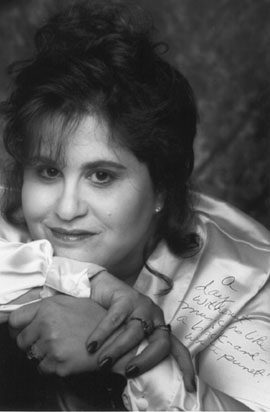|
The Lesley Test
 Early in my career as an audio reviewer with Stereophile Magazine it became patently obvious to me that I needed a new method with which to gauge the accuracy and musicality of equipment under test. Simply listening through my favorite recordings wasn't always a reliable indicator of quality. Many audiophiles visit an audio store with just one precious "album to die for" tucked safely under their arm. This is usually an album culled out of many hundred that pushes their emotional buttons. Whatever gear makes this one album sound its best is deemed to be the most accurate in the universe. In a culture reared on instant gratification, that's all the proof many of us need. But what if that album is sonically flawed in some fundamental way? Early in my career as an audio reviewer with Stereophile Magazine it became patently obvious to me that I needed a new method with which to gauge the accuracy and musicality of equipment under test. Simply listening through my favorite recordings wasn't always a reliable indicator of quality. Many audiophiles visit an audio store with just one precious "album to die for" tucked safely under their arm. This is usually an album culled out of many hundred that pushes their emotional buttons. Whatever gear makes this one album sound its best is deemed to be the most accurate in the universe. In a culture reared on instant gratification, that's all the proof many of us need. But what if that album is sonically flawed in some fundamental way?
Suppose that the recording or mixing engineer equalized the recording to give it an ungodly amount of lower treble boost. Sibilance galore - annoying at best and just plain irritating on most speakers, this recording might just sound fine on a speaker deficient in treble. It is exactly this business of "two wrongs" making a right that makes absolute judgement so difficult - unless one is intimately familiar with the recording from beginning to end.
The Lesley Test evolved in the mid-80s when I embarked on a series of purist recordings. I was fortunate in that my spouse, Lesley, was a professional singer with a strong classical foundation and an excellent ear for jazz and pop idioms. I was constantly exposed to her singing during numerous performances in both large and small venues, so I had developed a keen sense of what the timbre of her voice was all about. I was able to evaluate the effect of the mike, mike placement, and the rest of the recording chain on Lesley's total presentation. Because I was intimately familiar with what was on the recording, these recordings of Lesley (often in my listening room) blossomed into a high-resolution tool for evaluating equipment. Since then the Lesley Test has become a staple of my reviewing process. Over the years, Lesley (mainly in the form of the
Jazz Me album) participated in hundreds of equipment evaluations. It was sometimes shocking and embarrassing to realize how difficult it is to faithfully reproduce the human voice. The purity of harmonic textures, dynamic nuances, and Lesley's coherency and emotional expressiveness were often "butchered" almost beyond recognition. For the record, tube amps and preamps came much closer to the real thing than did solid-state gear. It should not come as a surprise to you when I reveal that the Lesley Test is also the cornerstone for my speaker design work. All of my designs are optimized around Lesley's voice. When she sounds right, my work is done.
The Lesley Test led us directly to Black Dahlia Music. The idea of an Indie label devoted to purist recordings, fresh music, and new artists appealed to us. At this time, Black Dahlia Music showcases the talents of Lesley Olsher and Lorin Rowan. If you truly believe in good music, we invite you to our Listening Room . We naturally recommend that you start with Jazz Me. Enjoy!
Dick Olsher (1998)
|